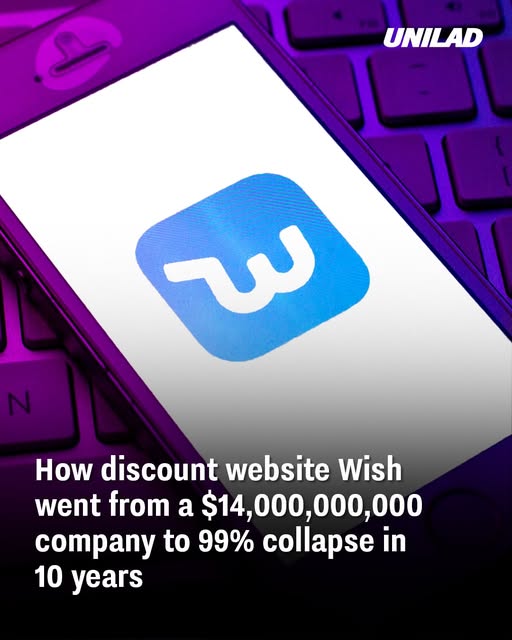Wish was founded by Peter Schülczewski, a former Google engineer, with a bold vision: to predict what shoppers want before they even search for it. By 2015, Wish had become the fastest-growing shopping app in the world, attracting 400 million users and securing a valuation around $14 billion. Big companies like Amazon and Alibaba reportedly offered nearly $10 billion to acquire it but those offers were turned down. The ambition was immense: the intention was not simply to compete, but to become something bigger than Walmart.
At its peak, Wish rode high on a model built on impulse purchases. Low-priced items dresses for a couple of dollars, gadgets for less—flooded the platform. Worth consistent hype, its growth seemed unstoppable.

Cracks Begin to Show
Despite bold promises, Wish was masking serious issues. Products often took weeks or even months to arrive. Many buyers complained about the quality. Counterfeit or misleading listings became common. Problems with refunds and returns multiplied. Internally, though, there was a belief that such problems could be addressed later—after the growth momentum was fully achieved. Financially, the picture was harsh. In 2020 alone, Wish spent roughly $1.7 billion on advertising, yet still lost $745 million while generating about $2.5 billion in revenue. The ad-heavy strategy was meant to fuel user acquisition, but little investment seemed to go into trust, delivery, or product experience.
Decline Accelerates
When the external environment changed, Wish’s vulnerabilities were exposed. During the COVID-19 pandemic, digital advertising costs surged, and many companies including Wish saw user acquisition become far more expensive. Revenue dropped sharply. Loss of user trust added fuel to the fire. Monthly active users collapsed from over 100 million down toward 11 million. At the same time, new rivals emerged. One of them, Temu, offered faster shipping times, improved design and user experience, and better reliability. Users increasingly chose competitors that felt more reputable and dependable. Wish’s model, built on deep discounts and novelty, began to look unsustainable.
Leadership Turbulence & Final Collapse
Leadership instability compounded the other problem areas. Schülczewski stepped down in 2022. Over the next year, multiple CEOs took charge, but no turnaround was successful.
By 2024, the company was sold for $173 million—just a fraction of its former value. That marked a collapse of about 99% from its peak valuation of $14 billion. It was a dramatic fall for a company that once aspired to be a giant among e-commerce platforms.

Lessons from the Fall
Wish’s story offers a number of cautionary lessons for tech startups and e-commerce ventures:
- Growing fast doesn’t guarantee lasting success. If rapid growth comes at the expense of quality, logistics, user satisfaction, or trust, the downside can outweigh gains.
- Reliance on flashy advertising and promotions can backfire if the product experience fails to match expectations. Users eventually notice delays, poor quality, or hidden drawbacks.
- Having competition that delivers better user experience can quickly outpace a company resting on past hype. Innovation, trust, and consistency matter just as much as “lowest price.”
Conclusion
Wish’s decline from $14 billion to near collapse in just a decade shows that hype, fast user growth, and big promises are not enough. Without strong product integrity, reliable logistics, customer trust, and responsiveness to problems, even companies that seem unstoppable can unravel. In the end, the very foundation upon which Wish was built—cheap thrills, aggressive marketing, low expectations—became its greatest weakness when the world changed and rivals stepped in. The collapse is a stark reminder that sustainability matters more than virality.

















